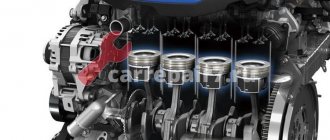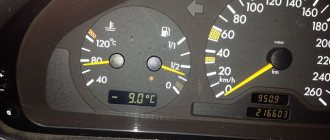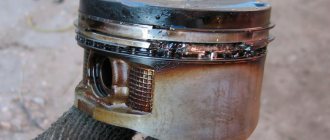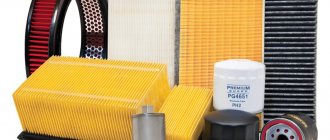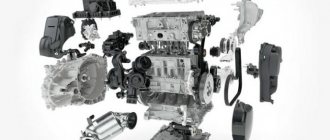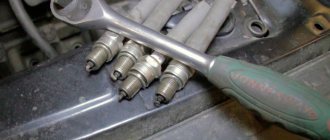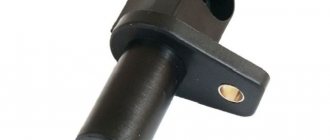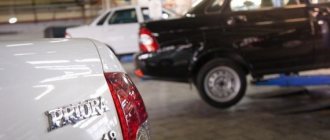Problem detected
In the first minute, it is not always clear what exactly happened - another unit is not spinning or the engine is jammed. What to do if the starter does not turn the crankshaft? They try to start with a simple visual inspection of the engine compartment.
They are trying to determine whether the engine can jam due to:
- Overheating (this can only be felt immediately after it stops).
- Lack of lubrication (check level).
- Inspect the external condition of all components; it is important to note the presence of leaks or mechanical damage. The coolant level is measured. Without it, the engine will also overheat.
If the engine is jammed, you should check the operation of the entire cooling system. Boiling of the liquid indicates a faulty bleed pump. The pump is responsible for circulation; without this, the temperature in the engine channels rises.
How to avoid engine seizure?
photo: unsplash.com / Evan Hein
The best way, the most logical and if not the only way to avoid engine seizure (that is, serious damage) is to regularly change the oil and filters and check the condition of the engine.
It doesn't hurt to carefully monitor the coolant temperature, although a sharp increase in temperature is often a signal that something has just happened to the engine.
You should also not ignore the oil pressure indicator light on your dashboard. Many drivers check the oil level only when the red light with an “oil can” starts flashing on the panel.
It's definitely too late because when this light comes on, it means that the engine oil pressure has dropped below normal, providing only minimal lubrication to the engine components.
see also
The principle of operation of the engine speed limiter and their types
Always pay attention to the “Check Engine” light, carry out timely maintenance, filling the engine only with high-quality motor oil and other fuels and lubricants.
Do not overheat the engine and, finally, do not trust engine repairs to incompetent mechanics.
Why doesn't the crankshaft spin?
The engine is jammed - check manually to see if the crankshaft can be torn off. If this does not happen, then you can engage any gear of the box and try to push the car. It is strictly forbidden to jerk the machine with a cable. This could cause even more damage.
The engine is jammed - it is recommended to unscrew the spark plugs and repeat attempts to manually turn the crankshaft. The reasons may be foreign objects in the wells or scattered liners, which is a fairly rare case. The liquid in the pistons will be squeezed out when the spark plugs are unscrewed, and foreign objects and contaminants can be seen through the inch hole.
How to understand that the engine has caught a wedge?
The idea that the engine is seized comes after the starter relay clicks, which is not followed by rotation of the crankshaft. It is likely that the starter clicks but does not turn due to a dead battery or a malfunction of the starter itself. To identify a seized engine, you must try to turn the crankshaft by hand. You can do this in 2 ways:
- Turn the crankshaft using a wrench using the pulley bolt. The disadvantage is that on most modern cars the engine compartment layout limits access to the pulley;
- hang one side of the drive axle, engage the highest gear and try to turn the engine by the wheel.
You should not try to turn the crankshaft while towing the car on a cable. If the engine is seized, trying hard to turn the crankshaft can cause even more damage.
What to do and how best to repair a jammed motor?
Suppose the engine of your car still seizes, but you do not want to completely disassemble it for a major overhaul. In this case, remove the timing belt and try to rotate the camshaft gear(s). If the gear does not rotate in the direction of rotation of the CV, it is likely that the engine is seized due to the valves. In this case, we recommend starting the repair of a jammed engine by removing the valve cover and cylinder head.
If the crankshaft pulley does not rotate in any direction, remove the pallet to remove the main bearing yokes and connecting rod lower head caps. If bearings are found to be lifted, stuck to the crankshaft and rotated, replacing the plain bearings will still not be enough. We recommend not only checking the oil pump, but also removing the crankshaft to blow out the oil supply channels with compressed air. It is likely that the channel is coked, which has led to a local lack of lubrication. If the plain bearings are normal, it is necessary to remove and troubleshoot the CPG.
Additional sources of failure
If after basic checks it remains unclear why the engine jammed, it is recommended to recall previous events. Have you added oil before, and if so, what quality? Two oils of different types and viscosities could easily curdle and foam.
Adding low-quality additives to engine oil will also adversely affect the operation of its components. Similar consequences will occur when using oils not recommended by the manufacturer.
Fuel affects the condition of the pistons and rings. Too high an octane number leads to their deformation, and because of this, many people have had their engines seize up more than once. The cause of the malfunction may also be a malfunction of the ignition system.
Irregularities at work
If the engine is jammed, also check the moment of spark formation in the engine. Each moment of fuel ignition must occur when it is at its highest point. If this is delayed, there will be resistance to the movement of the crankshaft when the other piston is pushed down with force due to the mixture.
Similar problems arise when fuel is not injected into the piston in a timely manner when the spark is supplied correctly. It is better to diagnose these components in a car service center using modern equipment. It is also not allowed to drive in hot weather with a faulty radiator cooling fan.
The oil pump is mechanically connected to the crankshaft. The sufficiency of oil reaching the rubbing surfaces is checked. Unfortunately, it is possible to diagnose hidden defects when the engine has already seized. VAZ has similar problems with insufficient car care.
Oil starvation inside the engine occurs when the level in the crankcase is constantly low. The crankshaft should practically be bathed in protective additives. Otherwise, the metal expands under the influence of temperature. Therefore, delaying periodic oil changes is strictly not recommended.
What is a motor wedge?
Let's start with the fact that if the engine is operating in its nominal mode, that is, normally, then all moving and rubbing elements of this engine that interact with each other must be lubricated with lubricants that are appropriate and specific to the technical characteristics of the engine. For example, it is unacceptable for the piston ring to be in direct contact with the cylinder walls - between the elements there must be a thin layer of oil film, which reduces friction and, accordingly, can extend the trouble-free operation of the engine, not limited to several thousand kilometers, but several hundred thousand.
However, if this thin micron-thick layer of lubricant disappears from the honed surface of the cylinder and the metal elements come into contact with each other without lubrication, even microscopic irregularities will cause a rapid increase in friction, as a result of which most of the mechanical energy (up to 95%) is converted into heat . And the most dangerous thing for internal combustion engines will begin - dry friction.
The problem is that once such a process begins, over time (and quite quickly) it will only worsen, one problem will lead to another. The more the rubbing elements heat up, the more they will expand, increasing pressure and displacing the remaining oil film.
Even if the lack of lubrication was a temporary phenomenon, as the metal expands due to its heating, the gaps will decrease and the engine oil may simply cease to perform its function of reducing friction between the involved components, simply being forced out of critical places.
In extreme cases, so much heat can be generated that the engine will eventually stop abruptly, signaling a costly repair (at best) or the need to purchase a new motor.
Often, when the engine is starved of oil, the connecting rod bushings jam.
In this case, the bushing can rotate, and the pin can get jammed both in the upper head of the connecting rod and in the piston bosses, which can lead to the “hand of friendship”; the cylinder block can be pierced by the connecting rod without hope of subsequent restoration. see also
Ten signs that your car is seriously faulty
In other cases, the working parts simply actively “rub”, wearing out the mating surfaces at an accelerated pace or deforming them. Such a crippled engine may start after cooling, but it is unlikely to operate at its nominal value. It will knock, rattle and pull poorly, for example due to worn bushings, or smoke like hell due to worn rings.
We would like to tell you about the 10 most common causes of engine seizure. Perhaps, knowing them, you will be able to avoid expensive repairs or at least reduce their cost by noticing the problem in time.
Ridiculous cases
If the engine seizes, signs of thickened oil may indicate sugar entering the system. Similar consequences occur when stirring a raw egg, which, when the motor is running, will certainly heat up and weld all the channels. How the latter substance enters the system is known only to the owner of the car.
Sugar can be poured into the fuel by ill-wishers through the refueling hatch. There are many substances that change the composition of the oil. It happens that a driver may mistakenly pour a mixture that is lethal to iron into the engine neck.
A malfunction where coolant penetrates into the oil can also lead to jamming of the rubbing metals. This can be noticed when measuring the level using the dipstick. The changed composition is noticeable to the eye and to the touch: by color, viscosity, and the presence of foam. A whitish tint indicates a loss of oil quality.
Prevention
Engine wedging can be prevented by carefully maintaining the vehicle. Periodic inspections and constant monitoring of the performance of control and signaling units helps to avoid the situation when operation continues during malfunctions. It is important to notice the following conditions in time:
- visually low coolant level;
- visually low oil level in the crankcase;
- oil pressure sensor does not respond;
- deviations in economizer readings;
- change in engine thrust;
- extraneous sounds in the operation of the car: knocking, humming, ringing, grinding.
Immediate diagnostics in a car service center of suspiciously operating components will save you from expensive major repairs. It is recommended to stop operation if you are not sure about the serviceability of the engine.
Various cases
The course of action in the event of an engine malfunction depends on when it occurred. If the car suddenly stops while moving, then most likely there is a mechanical hit of a foreign body or a breakdown of the rotating unit. It is recommended to look for the faulty location and abandon further attempts to turn the engine by force.
After a long trip the engine was turned off. And the next morning it is impossible to scroll it manually. There is a high probability of curdled butter. Major renovation will be required. Most likely, you will be able to rotate the crankshaft, but with a lot of effort.
If the car has been standing for a long time and you need to start it, but the engine does not turn, then it is recommended to force the rotation through the gearbox by cable or manually. This often happens in cold weather, when mineral oil thickens greatly. There is no malfunction, you just need to warm up the oil or wait for warm weather.
How is it happening?
Most often, foreign objects enter through the carburetor flaps. Dust and larger inclusions also get there when cracks form along the air intake path. It is necessary to check the integrity of the pipes and the cleanliness of the filter.
After repairing the carburetor, a loose spare part could fall into the engine well. Similar consequences can result from careless installation of the engine head with valves. It would be a good idea to check the cleanliness of the lubricant by draining it from the crankcase. But the latest work is carried out on the pit under service conditions.
Belt break
A disastrous result is observed when the timing belt or chain breaks. Often the cylinder blocks even bend. At the moment of impact, the valve covers break. As a result, the engine has to be overhauled.
If repairs are insufficient, broken parts may remain in the crankcase; under some circumstances, they will again end up in the next engine wedge. A loose damper can also get caught under the timing belt or chain. Valves and cylinder blocks become deformed under incorrect operating conditions.
Scores appear that constantly touch the moving metal. At some point, when the wear becomes large enough, final wedging occurs and the crankshaft can no longer be turned.
What exactly jams in the engine and for what reasons
As a rule, the crankshaft jams. Or rather, its bearings. The piston jams less often. The main thing is that it is simply impossible to quickly answer the question of why the engine jammed.
The fact is that there are many reasons that can be divided into two main groups: mechanical damage and overheating.
Mechanical causes of internal combustion engine jamming
Foreign objects have entered the space above the piston or onto the piston head. This could be, for example, a missing/torn off nut. For example, the air filter mounting washer fell into the intake manifold, elements got into the intake when removing the carburetor, foreign objects could get directly into the combustion chamber, etc.
In this case, the piston jams, but not necessarily tightly. However, in most cases, serious repairs will be required to eliminate the consequences.
- A broken or skipped timing belt or chain, as well as a broken timing chain guide and a fragment of it getting under the chain itself.
Another thing to highlight is the ingress of foreign objects under the timing belt or chain. This happens in cases where the timing cover is removed. Also on the list of problems with the gas distribution mechanism are the desiccation of one or more valves and the breakage of their springs. It is also possible for the valves to jam in their guides.
By the way, when the cause of jamming is a problem with the chain or belt, the valves become deformed (bent), which is why they cannot return to their seat. As a result, the piston cannot enter top dead center and the valve collides with the piston head.
- Piston pin outlet. This is fraught with the fact that the piston head will remain loose with all the ensuing consequences.
- Loose crankshaft main cap nuts or connecting rod lower head nuts. This can happen when, during engine repair, these nuts were not tightened properly (the tightening torque was incorrect).
By the way, if it is reliably known that foreign metal objects have entered the cylinders, they can be removed without completely disassembling the engine. To do this, you will need a magnet and a rod of sufficient length (for example, a knitting needle). Having raised the pistons of cylinders 1 and 4 to the top position, you need to unscrew the spark plugs and remove a metal object through the spark plug well with a magnet. If there is nothing in cylinders 1 and 4, then 2 and 3 should be checked in the same way.
Engine overheating
Many causes of engine seizure are associated with engine overheating. The most common of them are:
- Lack of lubrication or low oil level. As you know, inside the engine itself, oil plays the role of not only a lubricant, but also a coolant.
If the rubbing parts remain dry, they will expand when heated and, quite possibly, jam. In general, a lack of oil (oil starvation), in turn, can also be caused by various reasons. We also recommend reading the article about what consequences for the engine occur after the engine overheats. From this article you will learn about the reasons why the internal combustion engine overheats, as well as the likely consequences after increasing the operating temperature of the power unit.
- Coolant getting into the oil. Leads to the fact that the lubricating fluid loses its properties. Most often this occurs when the integrity of the gasket between the head and the cylinder block is damaged, but cracks in the cylinder head or cylinder head are also possible.
- Faulty thermostat or coolant pump.
Mechanical wear
The main reason for the wedge in domestic cars is internal loose fastenings in the engine due to poor-quality lubrication and its non-periodic replacement. The nuts of the main bearings, timing belt tensioner, and connecting rod head nuts may become loose. After a makeshift overhaul, the retaining ring may come out of the piston. The reason for this is non-standard spare parts.
A crumbled valve can be checked visually by removing the engine cover. Often a spring flies out or the valve itself bends when the timing belt breaks. Malfunctions occur when the cylinder head is tightened without a torque wrench, when a crack appears in the walls due to overstrain and, accordingly, the pressure on the lubricant drops. The likelihood of engine wedge increases with excessive loads while driving.
Main reasons
- Welding of liners with crankshaft journals due to oil starvation.
- Jamming of piston pins in the upper piston head. As with liners, the cause may be oil starvation. But the pin also jams due to misalignment of the upper head and piston pin. Due to the resulting misalignment, local zones of semi-dry friction and excessive tension appear, which can cause critical thermal expansion, scuffing and jamming.
- The piston is stuck in the cylinder due to engine overheating or poor heat dissipation.
- A broken piston blocks the movement of the connecting rod and the rotation of the crankshaft.
- Unqualified engine repair. Incorrect choice of thermal clearances when assembling the CPG, crankshaft, or unresolved malfunctions of the lubrication system can cause the breakdowns described above. Also, the cause of the wedge can be bolts and nuts accidentally dropped into the cylinders or intake tract.
- A bent valve blocks piston movement. The main reason for the “meeting” of valves with pistons is a broken timing belt. After a break or jump on several teeth of the timing chain at once and an impact, the valve stem bends. Severe deformation leads to the fact that the valve cannot move along the guide and blocks the movement of the piston on the approach to TDC. Valve desiccation will lead to similar consequences.
